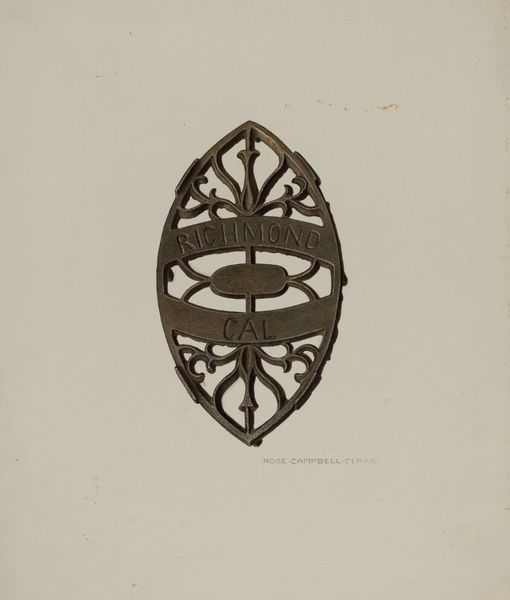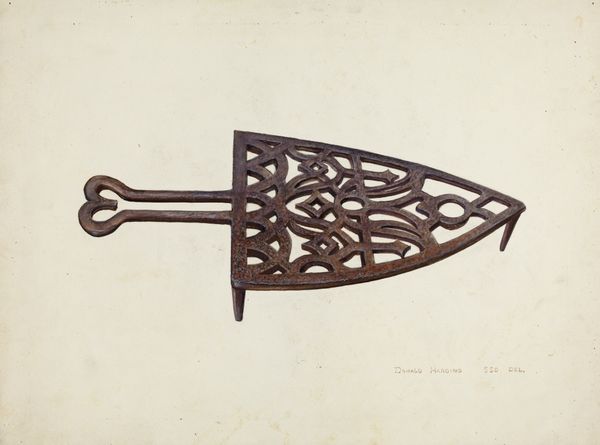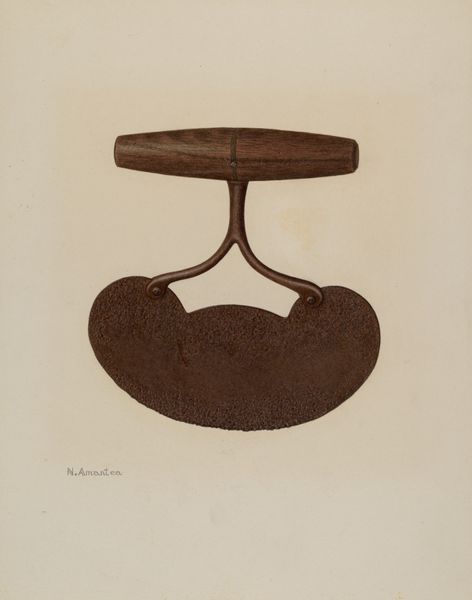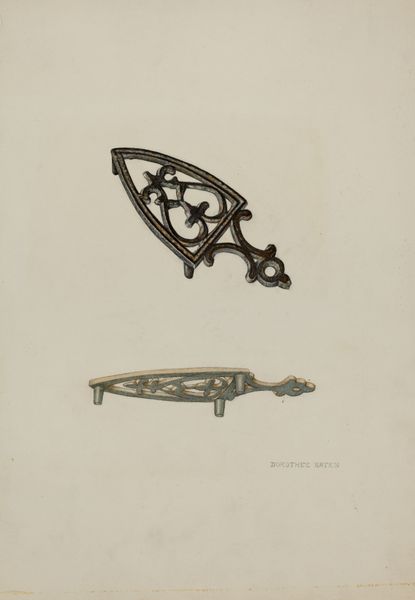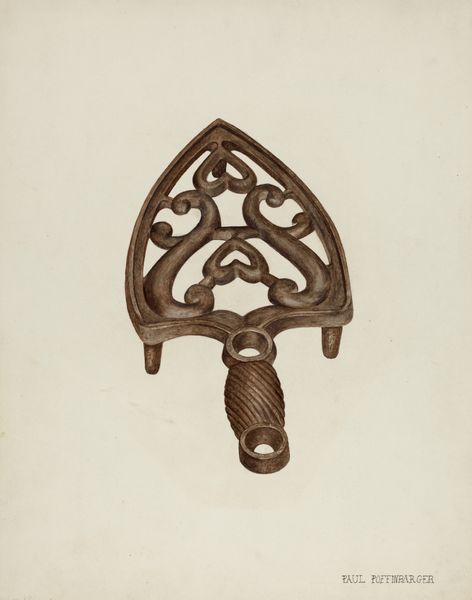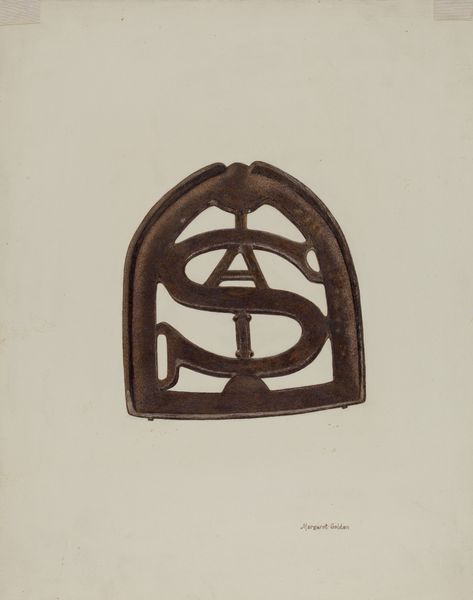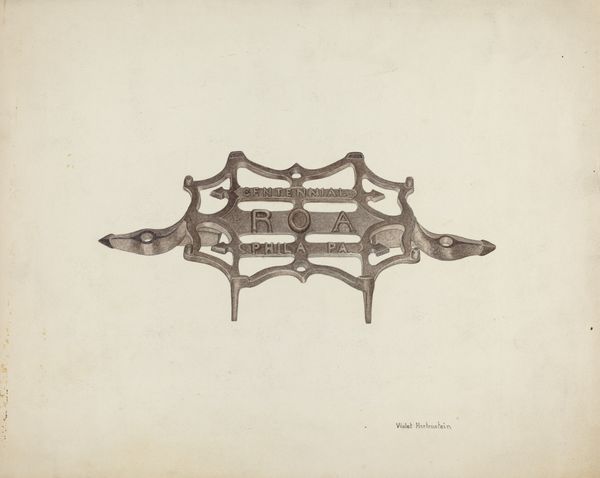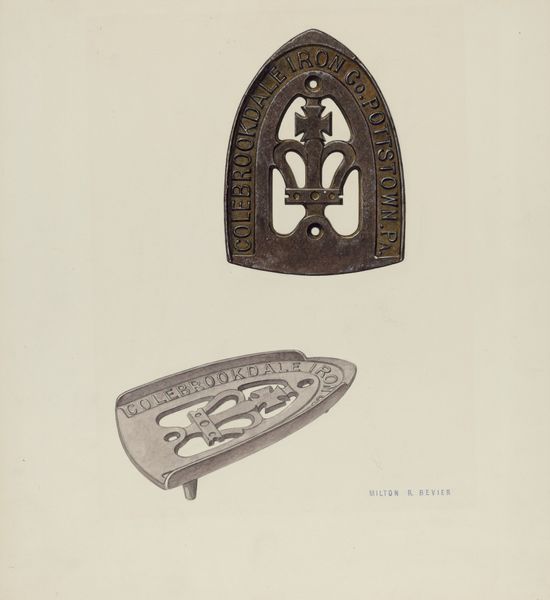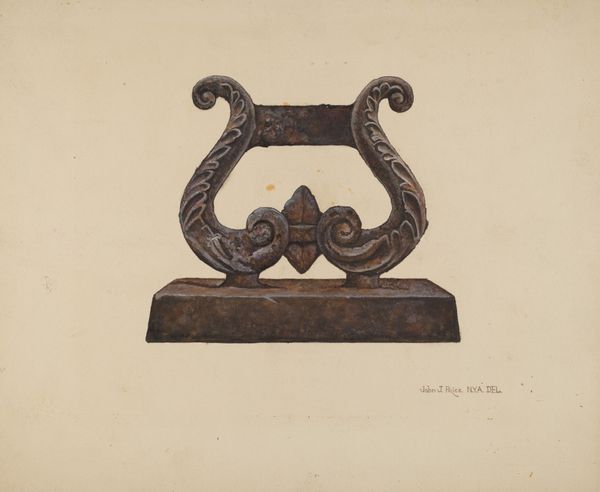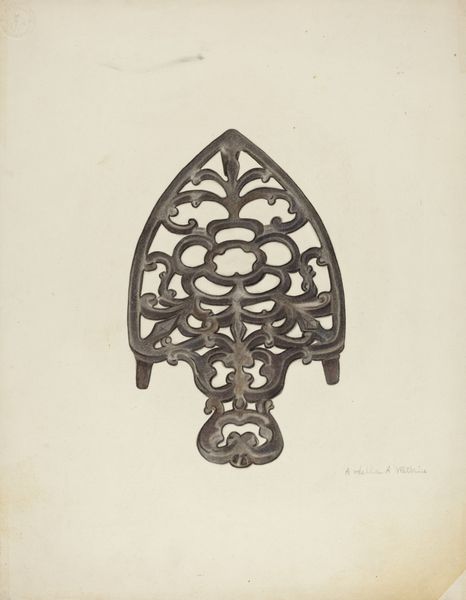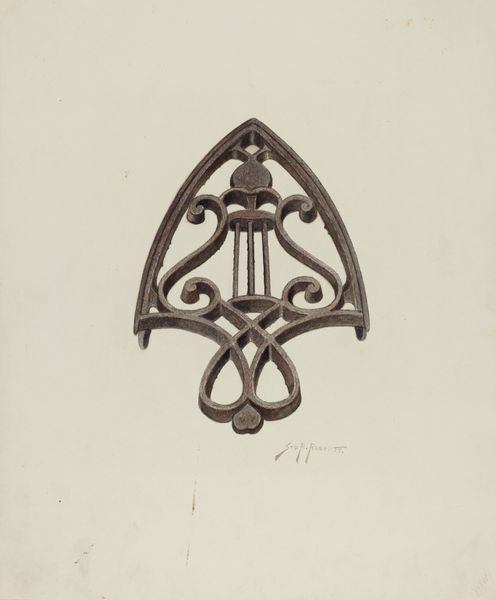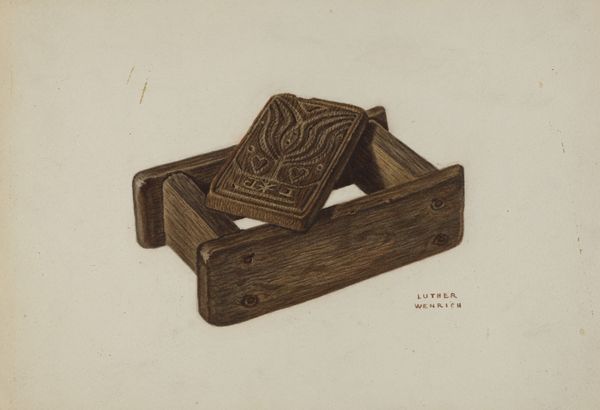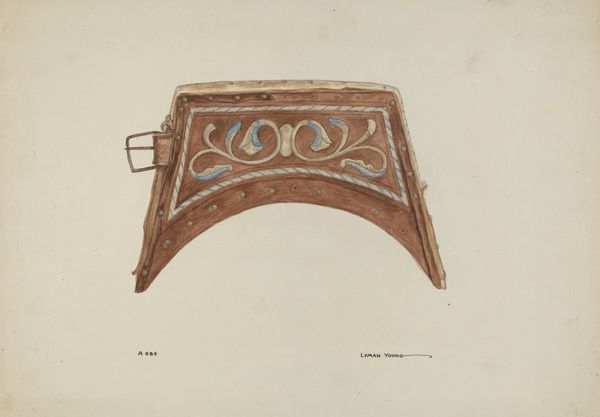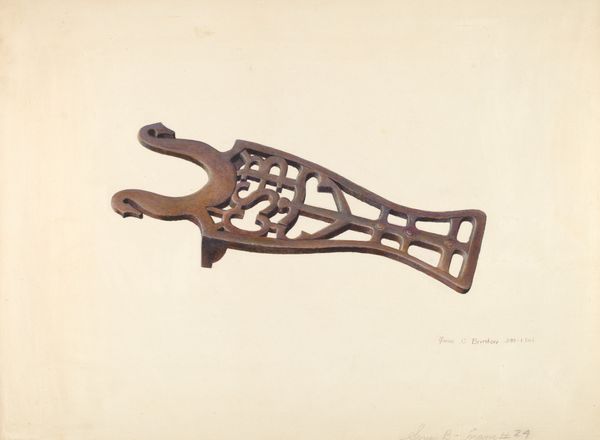
drawing, pencil, graphite
#
shading
#
drawing
#
toned paper
#
light pencil work
#
simple shading
#
white clean appearance
#
pencil sketch
#
charcoal drawing
#
pencil drawing
#
pencil
#
graphite
#
shading experimentation
#
graphite
Dimensions: overall: 35.9 x 26.7 cm (14 1/8 x 10 1/2 in.) Original IAD Object: 5 3/4" long; 5 3/4" wide; 1" high
Copyright: National Gallery of Art: CC0 1.0
Editor: Here we have Wellington Blewett's "Trivet," from around 1939, a drawing rendered in pencil and graphite. It’s quite a detailed depiction of what seems to be a rather mundane object. How do you interpret this work? Curator: Considering the period, the Depression-era, I immediately focus on the materials and the means of production implied. This isn't just a drawing of a trivet; it's a representation of labor, the skill involved in crafting such a detailed, albeit functional, object. The medium itself, graphite, would have been a relatively accessible material. How does the precision of the drawing play into its social context, do you think? Editor: That’s interesting, the accessibility of materials in that era! It's like Blewett is elevating the ordinary. Do you think there's any statement being made about class or consumerism? Curator: Exactly. It is crucial to acknowledge that the “craft” movement valorized individual labour and skill, against industrialization. But does the artist seem to romanticize labour or rather document it in its concrete forms? Perhaps Blewett highlights the intrinsic value of the work involved in creating even the simplest household items. Where do you think that fits in terms of material culture? Editor: So, instead of high art, we are focusing on the process. It gives importance to this domestic object! I never thought I'd analyze a trivet with this much depth. Curator: Precisely! Blewett makes us question where we place value and directs our focus toward the artistic and artisanal merit inherent in even everyday items of use and the social conditions from which these stem. Editor: It really reframes how I look at not only art, but the objects around me. Curator: Material analysis unveils meaning where we least expect it. Hopefully we now appreciate Blewett’s rendering with this awareness.
Comments
No comments
Be the first to comment and join the conversation on the ultimate creative platform.
